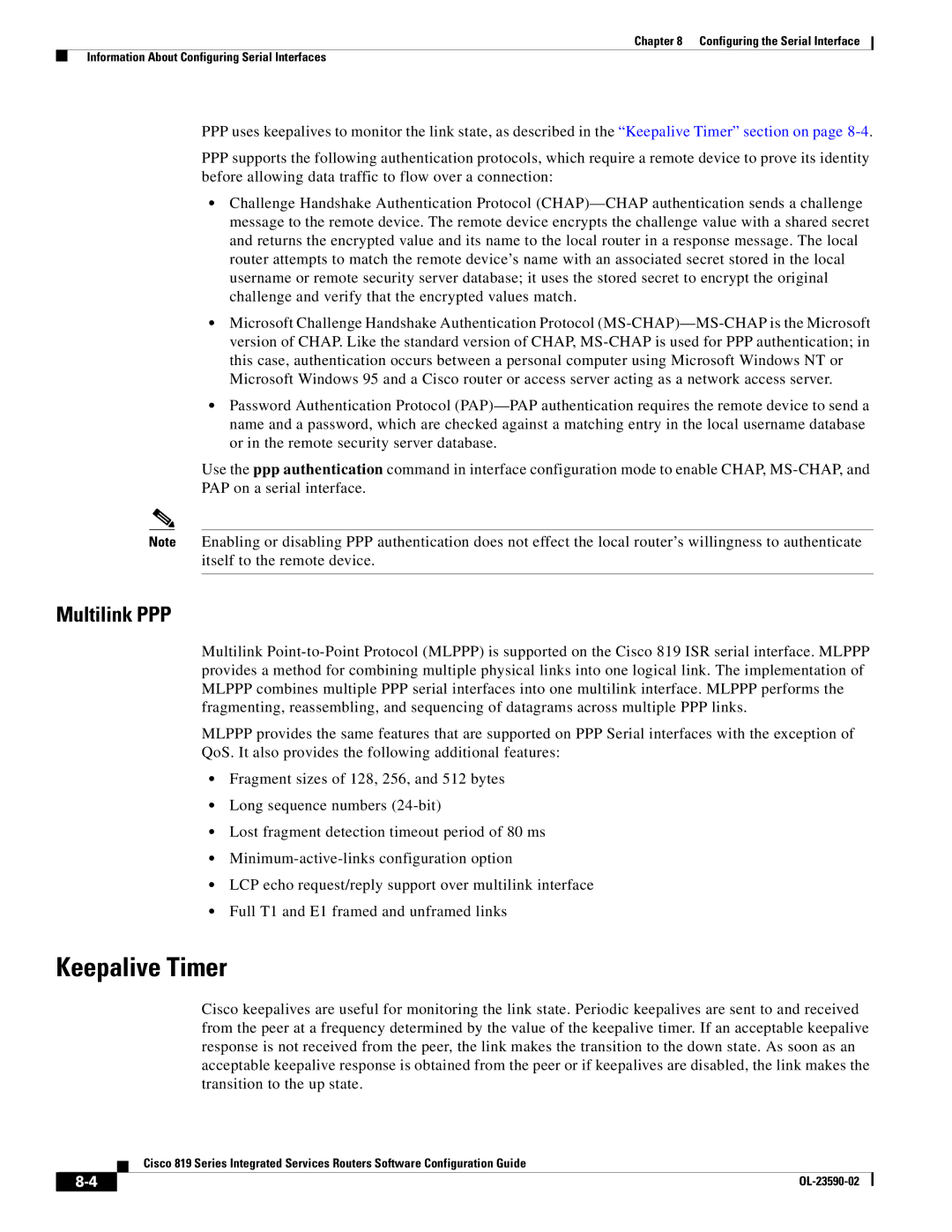
Chapter 8 Configuring the Serial Interface
Information About Configuring Serial Interfaces
PPP uses keepalives to monitor the link state, as described in the “Keepalive Timer” section on page
PPPsupports the following authentication protocols, which require a remote device to prove its identity before allowing data traffic to flow over a connection:
•Challenge Handshake Authentication Protocol
•Microsoft Challenge Handshake Authentication Protocol
•Password Authentication Protocol
Use the ppp authentication command in interface configuration mode to enable CHAP,
Note Enabling or disabling PPP authentication does not effect the local router’s willingness to authenticate itself to the remote device.
Multilink PPP
Multilink
MLPPP provides the same features that are supported on PPP Serial interfaces with the exception of QoS. It also provides the following additional features:
•Fragment sizes of 128, 256, and 512 bytes
•Long sequence numbers
•Lost fragment detection timeout period of 80 ms
•
•LCP echo request/reply support over multilink interface
•Full T1 and E1 framed and unframed links
Keepalive Timer
Cisco keepalives are useful for monitoring the link state. Periodic keepalives are sent to and received from the peer at a frequency determined by the value of the keepalive timer. If an acceptable keepalive response is not received from the peer, the link makes the transition to the down state. As soon as an acceptable keepalive response is obtained from the peer or if keepalives are disabled, the link makes the transition to the up state.
Cisco 819 Series Integrated Services Routers Software Configuration Guide
|
| |
|
